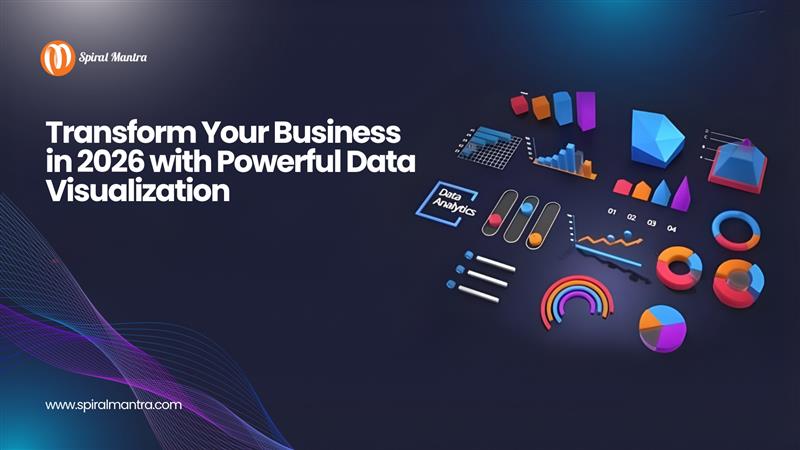
Introduction
Do you know predictive analytics is tremendously transforming every industry sector? Before utilizing it in your business you must know how it can affect a particular industry sector. In this article, we will talk about how Predictive Analytics is affecting the supply chain and logistics sector.What is Supply Chain Analytics?
Businesses may collect, evaluate, and act upon the data produced by their supply chains thanks to supply chain analytics. It enables them to make long-term strategic modifications and integrate AI in the supply chain that will provide the company a competitive edge in addition to immediate ones. Manually entering this data into spreadsheets or managing supply chains, which frequently span the world and involve hundreds of different businesses, is nearly difficult. It's quite inefficient, at the very least. With more precise estimates provided by analytics, planning may be enhanced and all the operational components can be set up to meet the anticipated volume. In order to prepare for a spike in orders during the busy Christmas season, a store may put larger purchase orders with suppliers and hire extra contractors for its warehouse if it notices a consistent boost in sales. The retailer can look for other possibilities while it still has time if any suppliers are unable to fulfill these larger orders. Both having too much or too little inventory is a common problem for many firms. Running out of things results in missed revenue, and having too much inventory raises carrying costs. Analytics assist in determining the ideal inventory balance to minimize expenses and prevent stockouts. Depending on the normal lead time for that particular supplier, the system may sound an alarm for SKUs that are getting low. The operations staff can also make decisions about which items should be kept in low quantities or phased out by using sales patterns to determine which ones need more warehouse space. All of these figures and measures taken together assist firms in meeting client expectations. Any interruption in the supply chain might have a detrimental effect on the clientele's experience and perhaps cause them to choose a rival product. Businesses can also monitor metrics that are directly relevant to the customer experience, such as order accuracy or on-time delivery rates, to spot and solve any worrying patterns.What is Predictive Analytics?
Predictive analytics is a subfield of advanced analytics that uses historical data along with statistical modeling, data mining, and machine learning to forecast future events. Data science subfields known as predictive and augmented analytics are used by companies that expand concurrently with big data platforms. This happens when additional data mapping processes are made possible by producing anticipated insights for larger, more broader data sets. For predictive modeling, a variety of algorithms and statistical techniques may be applied, such as deep learning technologies, time-series models, segmentation strategies, regression and correlation analyses, and classification methods.
Impact of Predictive Analytics on Supply Chain and Logistics Sector
Predictive analytics and supply chains have both changed dramatically in recent years. Predictive analysis solutions are reasonably easy for small businesses to integrate with other systems and are widely available at reasonable prices, so it's not surprising that more and more businesses are wishing to use them to enhance supply chain management efforts. It is common among large brands, whose yearly sales easily reaches hundreds of billions. They are aware of how crucial data is to making the best business decisions regarding inventory levels, manufacturing requirements, and other matters. These decisions are made on a regular basis by all departments engaged in the supply chain of an organization. Because it enables businesses to make more informed judgments regarding their supply chains than they otherwise could have done on their own using conventional methods, it has grown in popularity. forecasting data science is not only appealing to businesses; governments all over the world are beginning to employ sophisticated forecasting techniques for their objectives. Applications for big data analytics are used throughout the supply chain, from procurement and suppliers to manufacturing, shipping, sales, and final consumers. Predictive maintenance, planning, and forecasting are a few of the most widely used predictive solutions in supply chain management.Ecommerce – the biggest driver of Predictive Analytics in Logistics
E-tailers, including Amazon, Flipkart, Myntra, Snapdeal, ShopClues, Big Basket, and the dozen new start-ups on the market, are the main drivers of logistics analytics in India. The surge in e-commerce has led to a demand for predictive analytics in addition to logistics analytics. This is particularly true for Last Mile Delivery services, where predictive analytics is used to collect real-time data for rerouting or route optimization. Reducing expenses is the only approach for logistics management to influence a company's profit. Planning and streamlining the operations in this case require data analytics. Businesses may make better use of their resources when they have insights into how they are used and whether they are viable. Fleet-wide capacity management and resource distribution, for instance, can be optimized. Delivery route optimization can save travel time and expenses by using real-time analytics.Use Cases of Predictive Analytics in Logistics and Supply Chain
-
Transportation Management Systems (TMS):
-
Forecasting:
-
Final Mile Delivery:
-
Inventory Management:
-
Forecasting Vehicles and Itineraries:
-
Supply Chain Risk Management:

